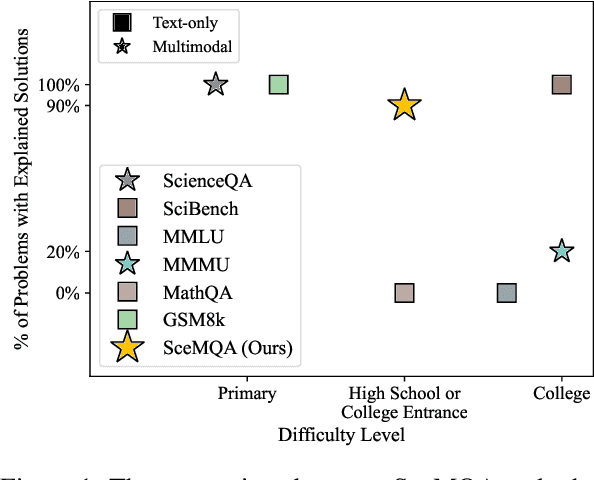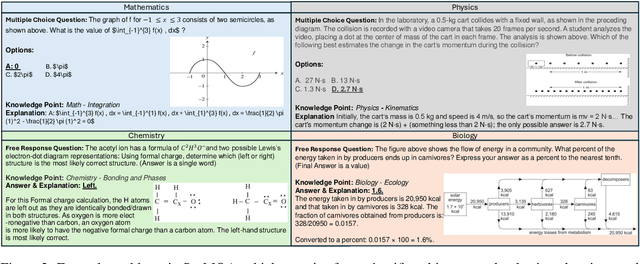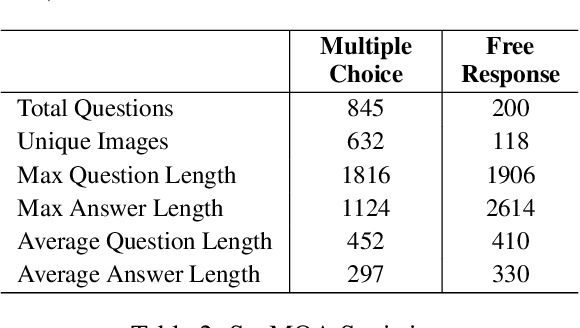Jiajun Jiao
SceMQA: A Scientific College Entrance Level Multimodal Question Answering Benchmark
Feb 06, 2024



Abstract:The paper introduces SceMQA, a novel benchmark for scientific multimodal question answering at the college entrance level. It addresses a critical educational phase often overlooked in existing benchmarks, spanning high school to pre-college levels. SceMQA focuses on core science subjects including Mathematics, Physics, Chemistry, and Biology. It features a blend of multiple-choice and free-response formats, ensuring a comprehensive evaluation of AI models' abilities. Additionally, our benchmark provides specific knowledge points for each problem and detailed explanations for each answer. SceMQA also uniquely presents problems with identical contexts but varied questions to facilitate a more thorough and accurate assessment of reasoning capabilities. In the experiment, we evaluate both open-source and close-source state-of-the-art Multimodal Large Language Models (MLLMs), across various experimental settings. The results show that further research and development are needed in developing more capable MLLM, as highlighted by only 50% to 60% accuracy achieved by the strongest models. Our benchmark and analysis will be available at https://scemqa.github.io/
Elucidating STEM Concepts through Generative AI: A Multi-modal Exploration of Analogical Reasoning
Aug 21, 2023

Abstract:This study explores the integration of generative artificial intelligence (AI), specifically large language models, with multi-modal analogical reasoning as an innovative approach to enhance science, technology, engineering, and mathematics (STEM) education. We have developed a novel system that utilizes the capacities of generative AI to transform intricate principles in mathematics, physics, and programming into comprehensible metaphors. To further augment the educational experience, these metaphors are subsequently converted into visual form. Our study aims to enhance the learners' understanding of STEM concepts and their learning engagement by using the visual metaphors. We examine the efficacy of our system via a randomized A/B/C test, assessing learning gains and motivation shifts among the learners. Our study demonstrates the potential of applying large language models to educational practice on STEM subjects. The results will shed light on the design of educational system in terms of harnessing AI's potential to empower educational stakeholders.
 Add to Chrome
Add to Chrome Add to Firefox
Add to Firefox Add to Edge
Add to Edge